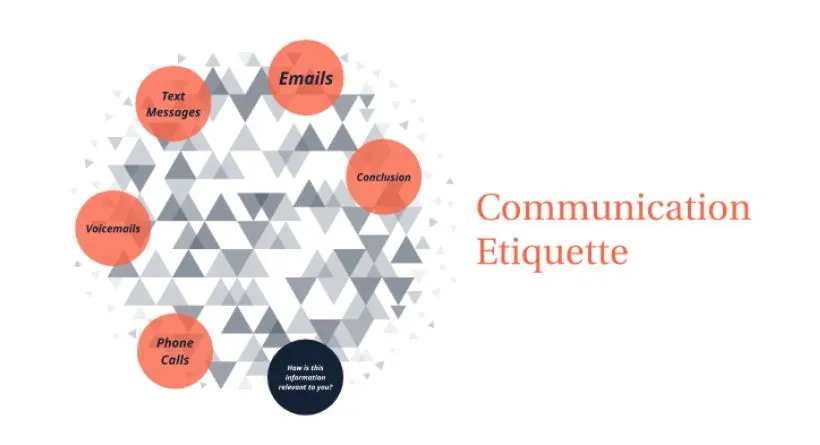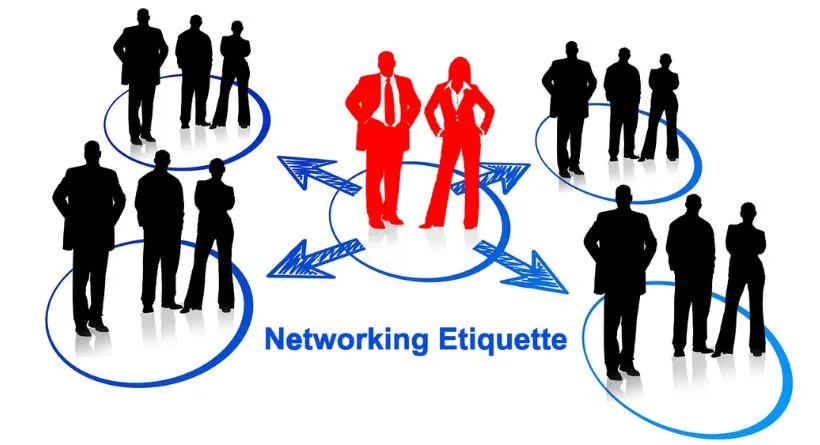Are you facing challenges in effectively communicating and collaborating with your colleagues or clients due to poor business etiquette? You’re not alone. In today’s fast-paced, globally connected world, understanding and practicing proper business etiquette has become more important than ever. In this blog post, we’ll delve into the five types of business etiquette that will help you overcome these obstacles and maintain a professional image. By providing an overview of the solutions, we’ll prove that we have the answers to your business etiquette dilemmas.
Now, let’s address the pain point that many professionals experience: the negative impact that poor business etiquette can have on your career and relationships. This comprehensive guide will not only offer valuable tips and examples but will also help you understand how to apply these principles in various situations, ensuring that you stand out as a polished and respectful professional.
I. Communication Etiquette

Verbal Communication Best Practices
Strong verbal communication skills are crucial in business. To effectively convey your message, keep sentences concise and to the point. Be clear and direct, using language that is easily understood by your audience. For example, avoid jargon when speaking to someone outside your industry. Always remember to listen actively and maintain a respectful tone, even in difficult situations.
Nonverbal Communication Cues
Nonverbal cues can speak volumes. Pay attention to your body language, eye contact, and facial expressions. Maintain a confident posture by standing or sitting upright, and make eye contact to show engagement. Be mindful of your facial expressions, as they can easily convey your emotions. For instance, a genuine smile can make you appear more approachable and trustworthy.
Email and Phone Business Etiquette
In today’s fast-paced world, email and phone communication are essential. When writing emails, use a clear subject line and keep the content concise. Address the recipient professionally, and always proofread before hitting “send.” In phone calls, be punctual and identify yourself clearly. Speak clearly and at a moderate pace, and always end the conversation on a positive note.
II. Meeting Etiquette

Preparing for Meetings
Preparation is key to a successful meeting. Review the agenda beforehand and arrive on time. If you’re leading the meeting, set a clear objective and share it with participants. Bring any necessary materials, such as documents or presentations, and ensure the technology is working properly. When attending a virtual meeting, test your audio and video beforehand to avoid any technical issues.
Conduct During Meetings
Whether in-person or virtual, maintaining proper conduct during meetings is essential. Be respectful of others by actively listening and not interrupting. Contribute thoughtfully, and avoid dominating the conversation. If you need to step out or experience technical difficulties, communicate this politely. Lastly, follow up on action items and share any relevant materials after the meeting.
Virtual and In-Person Business Etiquette
Both virtual and in-person meetings require specific etiquette. In virtual meetings, dress professionally and choose a neutral background. Mute your microphone when not speaking to minimize background noise. In in-person meetings, be mindful of personal space and maintain eye contact. Offer a firm handshake, but be respectful of those who prefer not to shake hands.
III. Networking Etiquette

Read More: Why Blog? The Benefits of Blogging for Business and Marketing 2023
Making Introductions
Making a good first impression is vital in business networking. When introducing yourself, smile, make eye contact, and offer a firm handshake. Clearly state your name, job title, and company. When introducing others, mention common interests or connections to facilitate conversation. Remember to be genuine and show interest in the people you meet.
Building Connections
To build lasting connections, engage in meaningful conversations and ask open-ended questions. Listen attentively and share relevant experiences. Be respectful of others’ time and avoid monopolizing the conversation. Follow up with new contacts by sending a personalized email or connecting on social media. Keep in touch and look for opportunities to collaborate or help one another.
Business Etiquette for Networking Events
At networking events, practice proper business etiquette to make a positive impression. Dress professionally, bring plenty of business cards, and be prepared with an elevator pitch. Show genuine interest in others, and avoid hard-selling your products or services. Mingle with different groups and avoid spending too much time with familiar faces. With these tips in mind, you’ll be well on your way to mastering business etiquette and making lasting connections.
IV. Dining Etiquette

Understanding Cultural Differences
When it comes to business dining, understanding cultural differences is crucial. Research dining customs and practices in the country or region you’re visiting. For example, in Japan, it’s customary to say “itadakimasu” before eating. By familiarizing yourself with such customs, you’ll demonstrate respect and adaptability, essential aspects of business etiquette.
Table Manners and Conversation
Proper table manners are a key component of dining etiquette. Place your napkin on your lap, use utensils correctly, and chew with your mouth closed. Remember to follow the “BMW” rule for table settings: bread on the left, meal in the center, and water on the right. Engage in light conversation, avoiding controversial topics. By exhibiting good table manners, you’ll leave a lasting impression.
Business Etiquette for Dining Occasions
At business dining occasions, arrive on time and wait for the host to sit before taking your seat. Order reasonably priced menu items, and let the host lead the way. If you’re the host, be gracious and ensure your guests are comfortable. Avoid discussing business matters until after the meal, and always thank your host before departing.
V. Workplace Etiquette

Respect for Colleagues
Showing respect for colleagues is essential in maintaining a positive work environment. Listen actively, be open to feedback, and avoid gossip. Treat everyone equally, regardless of their position, and be mindful of cultural and personal differences. Practicing empathy and understanding in your interactions will foster strong professional relationships.
Time Management and Punctuality
Time management and punctuality are crucial in demonstrating professionalism. Arrive on time for meetings, appointments, and deadlines. Plan your day effectively, prioritize tasks, and avoid procrastination. By managing your time efficiently, you’ll increase productivity and contribute positively to your workplace.
Also Read: 10.10 0.1 Piso WifiPause Time, Admin Vendo, Portal & Hack in 2022?
Office and Remote Business Etiquette
Whether working in an office or remotely, adhering to proper business etiquette is essential. In the office, maintain a tidy workspace, respect shared areas, and keep noise levels low. When working remotely, maintain clear communication channels, and set boundaries between work and personal life. By adhering to these guidelines, you’ll maintain professionalism, regardless of your work environment.
Conclusion
In conclusion, mastering business etiquette is essential for your professional success. By following the guidelines outlined in this article, you’ll be well-equipped to navigate various aspects of the business world, including communication, meetings, networking, dining, and workplace interactions. As you consistently practice proper etiquette, you’ll cultivate a positive reputation, strengthen professional relationships, and open doors for career growth. Embrace these principles, and watch as your career flourishes.
FAQs
Why is business etiquette important?
Business etiquette is vital for maintaining professionalism, fostering positive work relationships, and creating a strong impression on others. By practicing proper etiquette, you’ll enhance your reputation, facilitate collaboration, and contribute to a healthy work environment.
What are some examples of verbal communication best practices?
Examples of verbal communication best practices include being concise, using clear language, avoiding jargon, listening actively, and maintaining a respectful tone.
How can I improve my nonverbal communication skills?
To improve your nonverbal communication skills, pay attention to your body language, eye contact, and facial expressions. Maintain a confident posture, make eye contact to show engagement, and be mindful of your facial expressions.
What is the proper etiquette for business dining occasions?
At business dining occasions, arrive on time, wait for the host to sit before taking your seat, order reasonably priced menu items, and engage in light conversation. Avoid discussing business matters until after the meal, and always thank your host before departing.
How can I demonstrate respect for colleagues in the workplace?
Show respect for colleagues by listening actively, being open to feedback, avoiding gossip, treating everyone equally, and being mindful of cultural and personal differences. Practicing empathy and understanding in your interactions will foster strong professional relationships.


